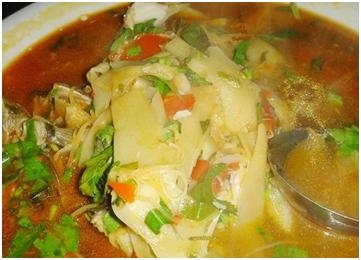CSC 256代寫、C++設(shè)計編程代做
時間:2024-04-30 來源: 作者: 我要糾錯
CSC 256-04 Final Project Part 2 (50 Points)
An ancient robot game
For this project, you are given a program that implements a game where a human user
tries to escape from four robots. The user and four robots are on an x-y grid. On every
step, you enter a move for the human. The robots will attempt to get closer to the human.
When a robot has the same x-y coordinates as the human, the game is over. You will
translate this program faithfully, following all function call guidelines and MIPS register
use conventions.
Two arrays x[4] and y[4] keep track of the x- and y-coordinates of four robots. The
positions of the human and the four robots are initialized in the program. On each step,
the user enters a move; the positions of the human and the robots are updated. This
continues until the human dies. This figure gives an idea of the game; we’ll work with a
text-only version, sorry.
In the main loop, the user is prompted to enter a move. The position of the user is
updated. Then the program calls a function moveRobots() to update the position of
the robots as they try to catch the human. The new positions of the human and the robots
are then displayed.
The function moveRobots() has prototype
int moveRobots(int *arg0, int *arg1, int arg2, int arg3)
arg0 is the base address of array that contains the x-coordinates of the four robots, arg1 is
the base address of array that contains the y-coordinates of the four robots, arg2 is the
x-coordinate of the human, arg3 is the y-coordinate of the human.
moveRobots()updates the positions of the four robots, and returns a 1 if the human is
alive, and a 0 if the human is dead (i.e., the human has the same coordinates as a robot).
Each coordinate of a robot is updated by calling the function getNew(), which returns
the new coordinate based on the current coordinate of the robot and the current
coordinate of the human.
When you translate moveRobots() to MIPS assembly language, arg0 through arg3
are in $a0 through $a3; the return value is in $v0.
The function getNew() uses simple rules to move a robot closer to the human. If the
difference in the coordinates is >=10, the robot's coordinate will move 10 units closer to
the human. If the difference in the coordinates is < 10, the robot's coordinate will
move one unit closer to the human. (See program listings.) getNew() has prototype
int getNew(int arg0, int arg1)
arg0 is the coordinate (x or y) of a robot, arg1 is the coordinate (x or y) of the human.
getNew() returns the new coordinate of the robot, based on the position of the human.
The function getNew() is already translated to MIPS assembly language, arg0 and arg1
are in $a0 and $a1 respectively, and the return value is in $v0.
A copy of the C++ program robots.cpp can be found here. The file assembly file contains
the main program and getnew(), already translated into MIPS assembly language. Your
functions will follow the main program in the same file. The template assembly file can
be found on Canvas.
Write the functions exactly as described in this handout. Do not implement the
program using other algorithms or tricks. Do not even switch the order of the arguments
in function calls; you must follow the order specified in the C++ code. The purpose of
this program is to test whether you understand nested functions. If you wish to make
changes to the algorithm, you must first check with the instructor.
Your functions should be properly commented. Each function must have its own header
block, including the prototype of the function, the locations of all arguments and return
values, descriptions of the arguments and how they are passed, and a description of what
the function does. Paste in the C++ code as inline comments for your MIPS assembly
code.
Submission: submit your code via Canvas. All your code should be in a single plain text
file(PDF only).
80% of your grade is for correctness. 20% is for clarity/documentation.
Output%
Your coordinates: 25 25
Enter move (1 for +x, -1 for -x, 2 for + y, -2 for -y):2
Your coordinates: 25 26
Robot at 10 10
Robot at 10 40
Robot at 40 10
Robot at 40 40
Enter move (1 for +x, -1 for -x, 2 for + y, -2 for -y):1
Your coordinates: 26 26
Robot at 20 20
Robot at 20 30
Robot at 30 20
Robot at 30 30
Enter move (1 for +x, -1 for -x, 2 for + y, -2 for -y):2
Your coordinates: 26 27
Robot at 21 21
Robot at 21 29
Robot at 29 21
Robot at 29 29
Enter move (1 for +x, -1 for -x, 2 for + y, -2 for -y):1
Your coordinates: 27 27
Robot at 22 22
Robot at 22 28
Robot at 28 22
Robot at 28 28
Enter move (1 for +x, -1 for -x, 2 for + y, -2 for -y):2
Your coordinates: 27 28
Robot at 23 23
Robot at 23 28
Robot at 27 23
Robot at 27 28
AAAARRRRGHHHHH... Game over
libra%
請加QQ:99515681 郵箱:99515681@qq.com WX:codinghelp
標(biāo)簽:
無相關(guān)信息















